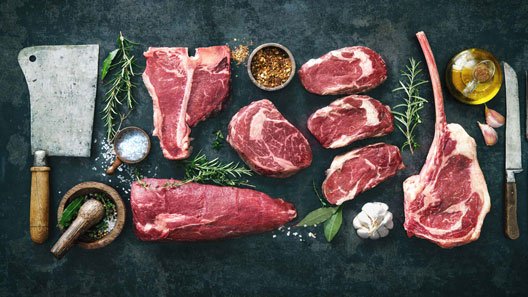No products in the cart.
When it comes to meat maturation we pride ourselves on our Black Label Dry Aged Steaks, for us they are the pinnacle of what a steak can be. However due to the cost of producing it in physical space, time and product weight loss it is not a cheap exercise.
That is why we we offer our West Country PGI (Protected Geographical Location) Beef as a more value oriented alternative as it is cheaper to produce, therefore we can offer it at a cheaper price.
Both of these lines are sourced from cattle that produce the finest beef, the only difference is in their maturation and processing. We would argue neither is better than the other when it comes to tenderness however the flavour profiles are very different with dry aged beef has an intense beefy & nutty flavour whilst the wet aged beef has a far more mellow flavour and probably a flavour you are more used too.
When it comes to enhancing the flavor and tenderness of beef, aging is a crucial process. Two primary methods are used: wet aging and dry aging. Both techniques aim to improve the meat’s quality but do so in distinct ways, each with its own set of benefits and disadvantages. In this article, we’ll delve into the differences between wet-aged and dry-aged beef, helping you to understand which might best suit your culinary preferences.
What is Wet Aging? Wet aging is a process where cuts of beef are vacuum-sealed in plastic and allowed to age in a refrigerator for a period, typically between a few days to several weeks. This method relies on the meat’s natural enzymes to break down the muscle fibers, thereby enhancing tenderness and flavor.
Benefits:
Disadvantages:
What is Dry Aging? Dry aging involves hanging beef, either as whole carcasses or large cuts, in a controlled, open-air environment for a period ranging from several weeks to several months. This process allows moisture to evaporate from the meat, concentrating its flavor, while natural enzymes break down the muscle tissues, enhancing tenderness.
Benefits:
Disadvantages:
Both wet-aged and dry-aged beef offer unique benefits to the culinary world. Wet aging provides a tender and cost-effective option for everyday consumption, while dry aging is celebrated for its unparalleled flavor and texture, appealing to the palates of gourmet enthusiasts. Understanding these differences can help consumers make informed decisions based on their taste preferences, budget, and the dining experience they seek. Whether you prefer the subtle, tender qualities of wet-aged beef or the intense, rich flavors of dry-aged beef, both methods offer a pathway to enjoying some of the finest meats available.
Depending on the type of steak these are the sizes we recommend based on appetite. Standard would be a typical restaurant size and red would be our choice.

4oz small
6oz standard
7oz medium
8oz large
10oz extra large
6oz sandwich
7oz medium
8oz standard
10oz large
12oz extra large
6oz small
7oz medium
8oz standard
10oz large
12oz extra large
16oz huge